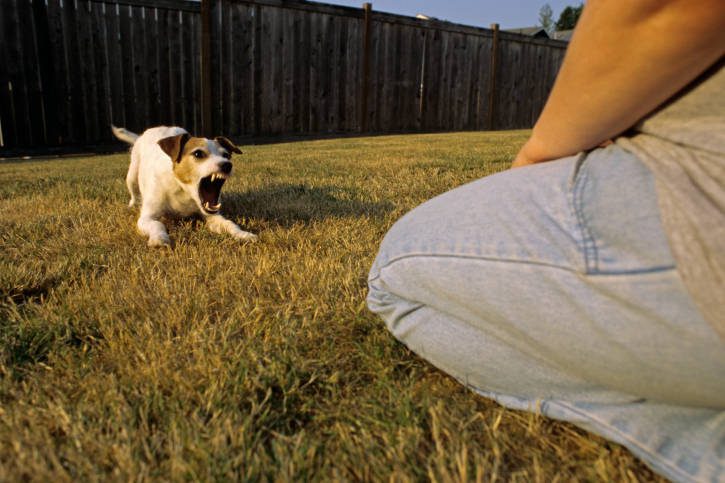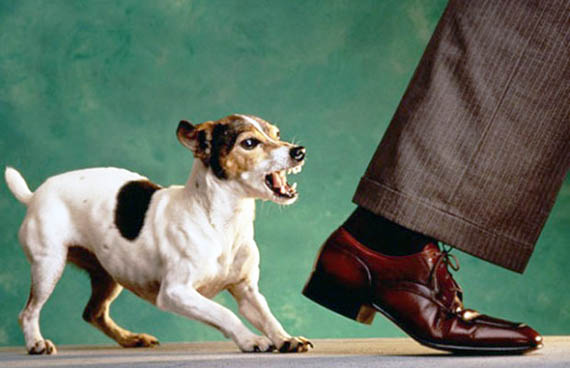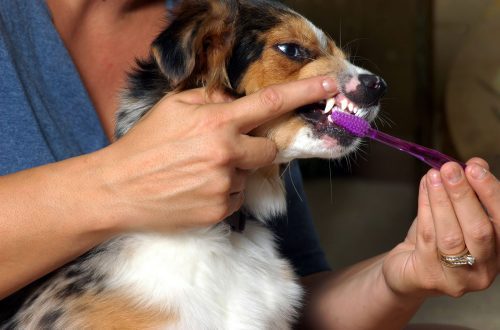
What to do if a dog barks at people?
First, we need to understand why a dog barks at people: is it fun, is it bored, or is it scared? There are several methods of work, let’s talk about the simplest, which is very easy to use in everyday life.
A very important point is to work with the correct distance, that is, we always work with the dog at a distance at which he is not yet overexcited. We always work with a dog that is below the threshold of arousal, because if our dog is already throwing, already barking, his condition is above the threshold of arousal and our dog is not receptive to learning. Those. if we know that our dog is barking at people who are, for example, at a distance of 5 meters, we start working at a distance of 8-10 meters.
How do we work out? At the first stage: at the moment when the dog looks at the passerby, we give a marker of the correct behavior (it can be the word “Yes”, “Yes” or a clicker) and feed the dog. Thus, we do not allow the dog to “hang” on the study of a person, the dog looked at the person, heard the marker of the correct behavior, we fed ourselves, towards the handler (you). But by the time the dog has looked at the passerby, it has already collected some amount of information that it will process while eating a piece. Those. at the first stage, our work looks like this: as soon as the dog looked, BEFORE it reacted, “Yes” – a piece, “Yes” – a piece, “Yes” – a piece. We do this 5-7 times, after which we fall silent for literally 3 seconds. While looking at a passerby, we count three seconds. If the dog herself has decided that after she looked at the passerby, she needs to turn around and look at the handler, at her owner, because she already remembers that they will give a piece there – that’s great, go to the second stage of working out.


That is, we now give the dog a marker of the correct behavior at the moment when the dog independently turned away from the stimulus. If at the first stage we “dakali” at the moment of looking at the stimulus (“yes” – yum, “yes” – yum), at the second stage – when she looked at you. If, for 3 seconds, while we are silent, the dog continues to look at the passerby and does not find the strength to turn away from him, we help him, which means that it is too early for him to work at the second stage.
We help her by giving a marker of the correct behavior while she is looking at a passerby. And we also work out in this way 5 times, after which we again fall silent for three seconds, if the dog again does not come off the passerby, we again save the situation and say “Yes”.
Why are we talking about the three second rule? The fact is that in 3 seconds the dog collects a sufficient amount of information, and she thinks over her decision: the passerby is scary, annoying, unpleasant or “well, nothing like a passerby.” That is, if in 3 seconds the dog did not find the strength to turn away from the passerby, this means that the trigger is quite intense and, most likely, now the dog will decide to act as usual – bark at the passerby, so we save the situation in order to prevent implementation of the previous behavioral scenario. When we have worked out the second stage at a distance of 10 meters, we reduce the distance to the trigger. We approach the road on which the passer-by walks, about 1 meter. And again we start working out from the first stage.
But often when dogs are included in the training, after we have reduced the distance, at the first stage, literally 1-2 repetitions are needed, after which the dog itself goes to the second stage. That is, we worked out stage 10 on 1 meters, then stage 2. Again we shorten the distance and repeat 2-3 times 1 and 2 stages. Most likely, the dog itself will offer to break away from the passerby and look at the owner. Again we shorten the distance and again return to the first stage for several repetitions, then go to the second stage.
If at some stage our dog breaks into barking again, this means that we have rushed a little, shortened the distance too quickly and our dog is not yet ready to work at this distance in relation to the stimulus. We are increasing the distance again. The most important rule here is “hurry slowly.” We must approach the stimulus in conditions where the dog is calm and not nervous. Gradually we come closer and closer, we work out different people. This is the simplest method, called “look at that” (look at this), is quite effective, it is easy to use in a domestic environment.
The most important thing is that we choose the path that people walk on, step aside so that the dog does not have the feeling that passers-by are stepping on it, because this is a fairly aggressive range of motion from the point of view of the dog’s language.







